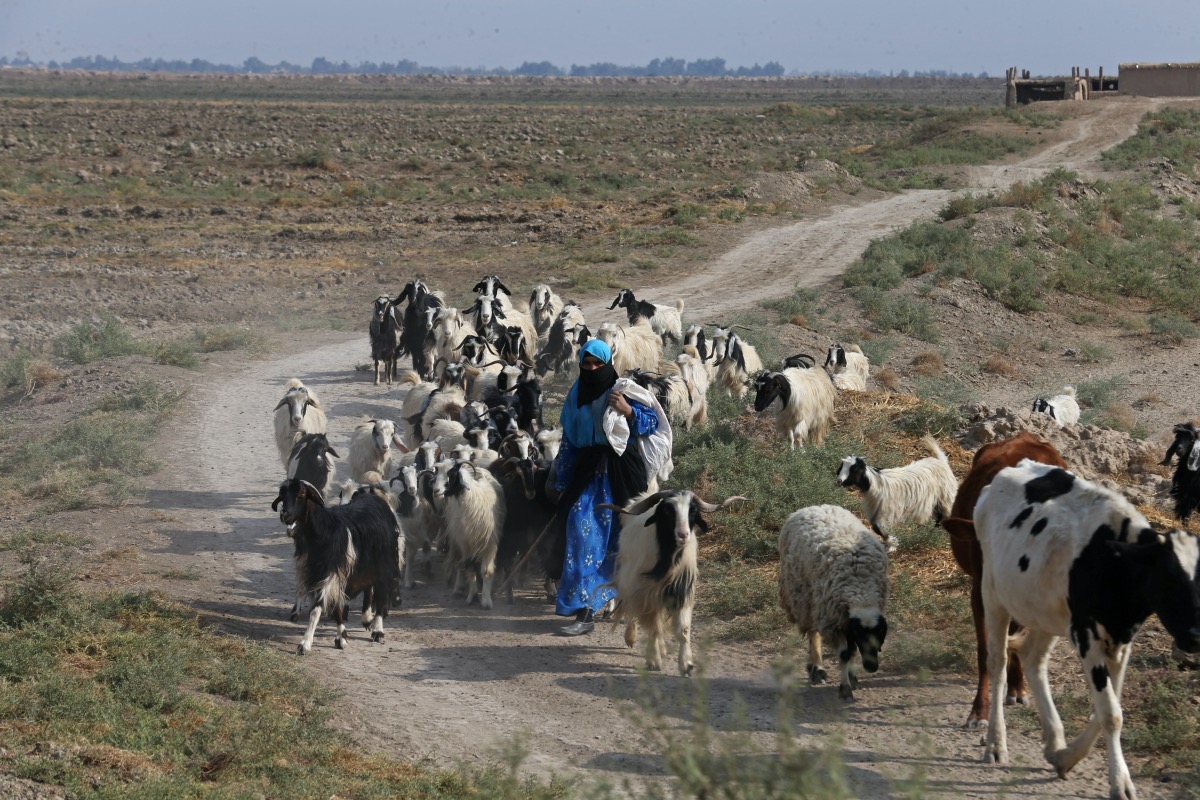
AMINA ISMAIL and MAHA EL DAHAN, of Reuters, report on the climate crisis facing Iraq and other Middle Eastern countries that could fuel more turmoil in the region as communities fight over dwindling water resources…
Diwaniya, Iraq
Reuters
Abbas Elwan drilled well after well in a desperate bid to find water for his family’s parched farmlands in southern Iraq. After yet another attempt failed in August, he took a gun from the kitchen of their mud house and slipped into the night.
Hikma Meteab found her husband’s body the next day with a gunshot wound to the head in a dried-up irrigation canal near the barren land that once produced enough wheat and barley to sustain the extended Elwan family.
“That was his last hope, and there was no water,” Abbas’s brother Ali, 56, told Reuters, standing in the scorching heat by a plot of land with dead plants poking out of the baked soil.

A woman grazes animals close to Al-Bu Hussain village which sits on the bank of a former canal which has dried up, in Diwaniya, Iraq, on 8th November. PICTURE: Reuters/Alaa Al-Marjani
As world leaders meet in Egypt for a climate summit to address issues including water and food security, Elwan’s plight highlights a crisis facing Iraq and other Middle Eastern countries that could fuel more turmoil in the region as communities fight over dwindling water resources.
Reuters spoke to more than two dozen people in five provinces across Iraq who all said that a prolonged drought, which has only worsened in recent years, was crippling livelihoods. Farmers in neighbouring Syria and Turkey are also struggling with lower rainfall.
“Climate change is a reality in Iraq.”
– United Nations mission in Iraq
“Climate change is a reality in Iraq,” the United Nations mission in Iraq said, adding that the country was the world’s fifth most vulnerable to the fallout from global warming due to rising temperatures, lower rainfall, salinity, and dust storms.
In Iraq, officials and water experts said rains had come later and ended sooner in each of the last three years.
Part of the “Fertile Crescent”, an arc sweeping from the Mediterranean to the Persian Gulf where farming developed more than 10,000 years ago, Iraq has been devastated by a triple blow of lower rainfall, decades of conflict, and less water flowing through its two main rivers, the Tigris and the Euphrates.
“Desertification now threatens almost 40 per cent of the area of our country – a country that was once one of the most fertile and productive in the region,” Iraq’s President Abdul Latif Rashid told the climate summit in Egypt last week.
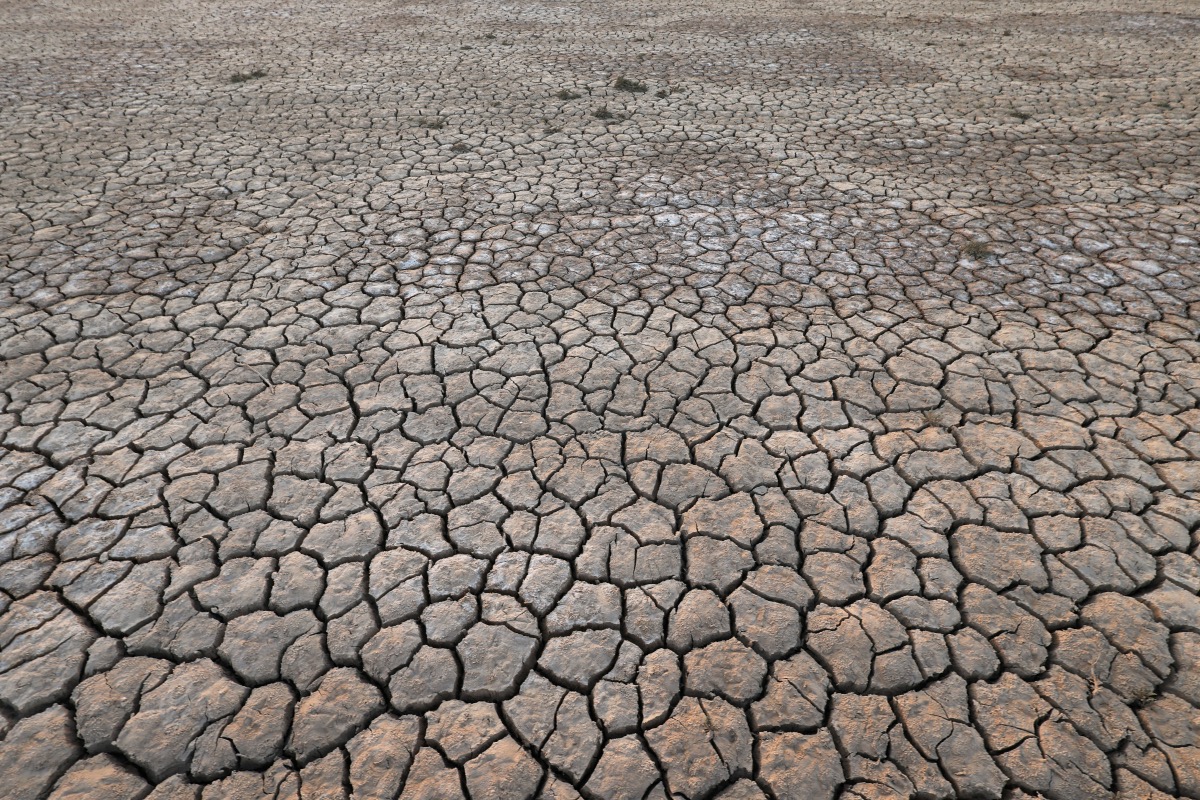
Salt residue is seen on arid farmland in al-Muthanna Province, Iraq, on 11th October PICTURE: Reuters/Alaa Al-Marjani
Nadhir Al-Ansari, professor at Sweden’s Lulea University of Technology, said rainfall in Iraq had declined by 30 per cent over the past three decades, with the lowest precipitation coming in the last two years.
“What was once known as the Fertile Crescent started to die about 35 years ago,” he said.
Lower volumes of water flowing from Turkey through the Tigris and Euphrates, rivers on which Iraq has depended most for irrigation, have left it more exposed when the rain dried up, said Harry Istepanian, an independent energy and water expert in Washington and a senior fellow at the Iraq Energy Institute.
“Rainfall and groundwater became very important,” he said.
Baghdad says dams upstream, mainly in Turkey, are emptying its rivers. Turkey says it has never changed the course of the rivers, or cut off any water.
Ankara’s ambassador to Iraq said in July that the drought had hit Turkey too, and that instead of asking for more water, Baghdad should manage its supplies more carefully.
In Turkey’s south-east, where the Tigris and Euphrates draw their waters, rainfall in the year to September was 29 per cent below the average of the previous three decades, and it was even worse in 2021, data from Turkey’s meteorological agency showed.
The combination of dams and drought has shrunk the waters of the two rivers flowing into Iraq this year to only a fifth of previous levels, water expert Istepanian said.
Inefficient use of the water Iraq does get – due to poor management, illegal siphoning of supplies, and old, leaking infrastructure after decades of war – has combined with a rapidly growing population to exacerbate the crisis, he said.
Almost 90 per cent of rain-fed crops, mostly wheat and barley, failed this season, according to the United Nations Food and Agriculture Organization in Iraq.
Before 2020, Iraq could produce almost 5.5 million tonnes of wheat. Last year, the government only received 2.1 million, Salah El Hajj Hassan, FAO representative in Iraq, told Reuters.
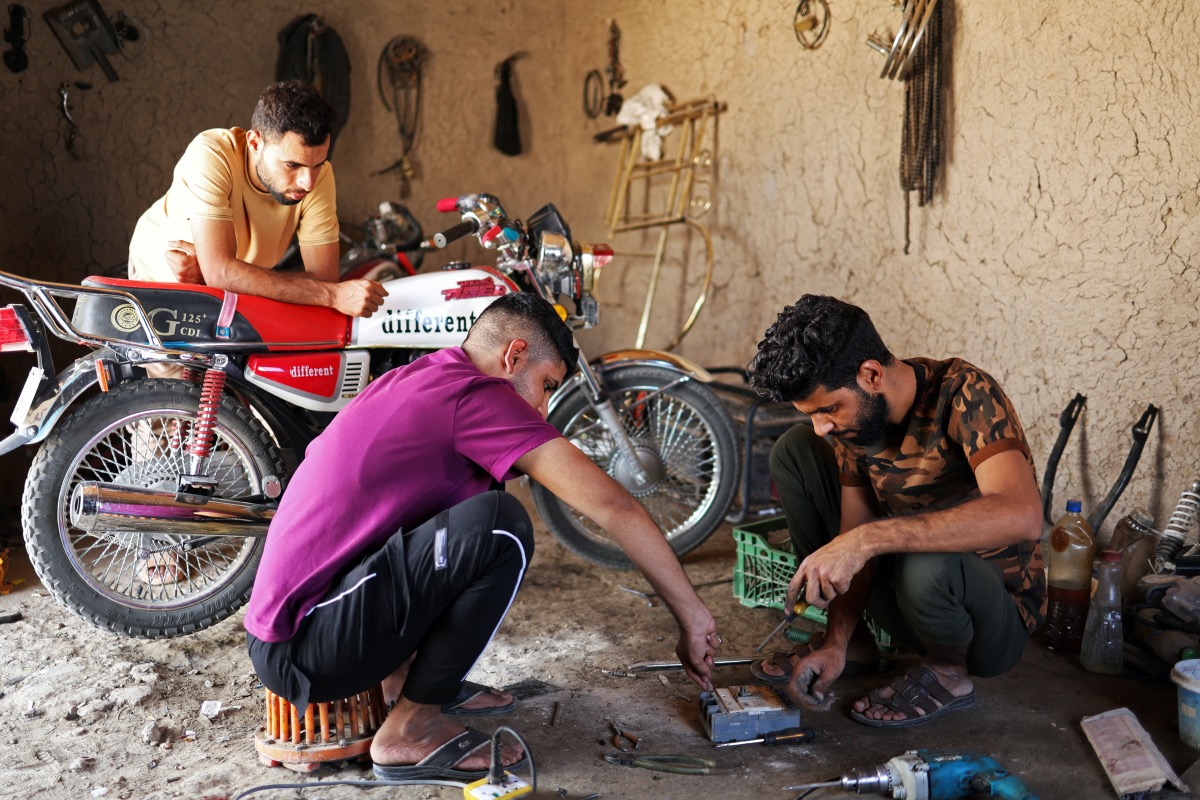
Abdul Amir Ali, 23, centre, and Hussein Ali, 31, right, repair electrical items in their workshop in the village of Al-Bu Hussain which sits on the bank of a former canal which has dried up, in Diwaniya, Iraq, October 20, 2022. Abdul and Hussein’s uncle, Abbas Elwan, committed suicide in August after attempts to find water for his parched farmlands failed. Abbas received a monthly unemployment allowance, but with dwindling crops and rising food prices he went into debt. In desperation, he tried digging wells to grow vegetables. Each well cost the equivalent of his monthly allowance. Each time water would emerge for a few days, and then dry up. “That was his last hope, and there was no water,” Abbas’s brother Ali told Reuters. PICTURE: Reuters/Alaa Al-Marjani
On his farm in Diwaniya province, Abbas Elwan received a $US200 monthly unemployment allowance, but with dwindling crops and rising food prices he went into debt.
In desperation, Abbas, who was 62 when he took his life, tried digging wells so he could grow vegetables.
Each well cost the equivalent of his monthly allowance. Each time water would emerge for a few days, and then dry up. Now the family struggles to find even drinking water, Ali Elwan said.
Their village of Al-Bu Hussain is one of many lining the banks of a former canal – its bed now bone dry – that formed part of a network of waterways east of the Euphrates.
We rely on our readers to fund Sight's work - become a financial supporter today!
For more information, head to our Subscriber's page.
In the nearby village of Al-Bouzayyat, many have left for cities or other provinces in search of jobs.
“The village is empty,” said Hedyya Ouda, one of the few remaining residents when Reuters visited her in October.
Ouda and her husband stopped growing wheat and barley three years ago because of water shortages, sold their livestock and were forced to travel about 60 kilometres twice a month to buy drinking water.
When Reuters returned to their village in November, both had left for the city.
“About 800 families have left the villages,” said Shahid Al-Shahed, mayor of the district where Elwan’s farm is located.
“I’m not even thinking of providing water for agricultural plans. I have been thinking for two months now about how to deliver drinking water,” he said.
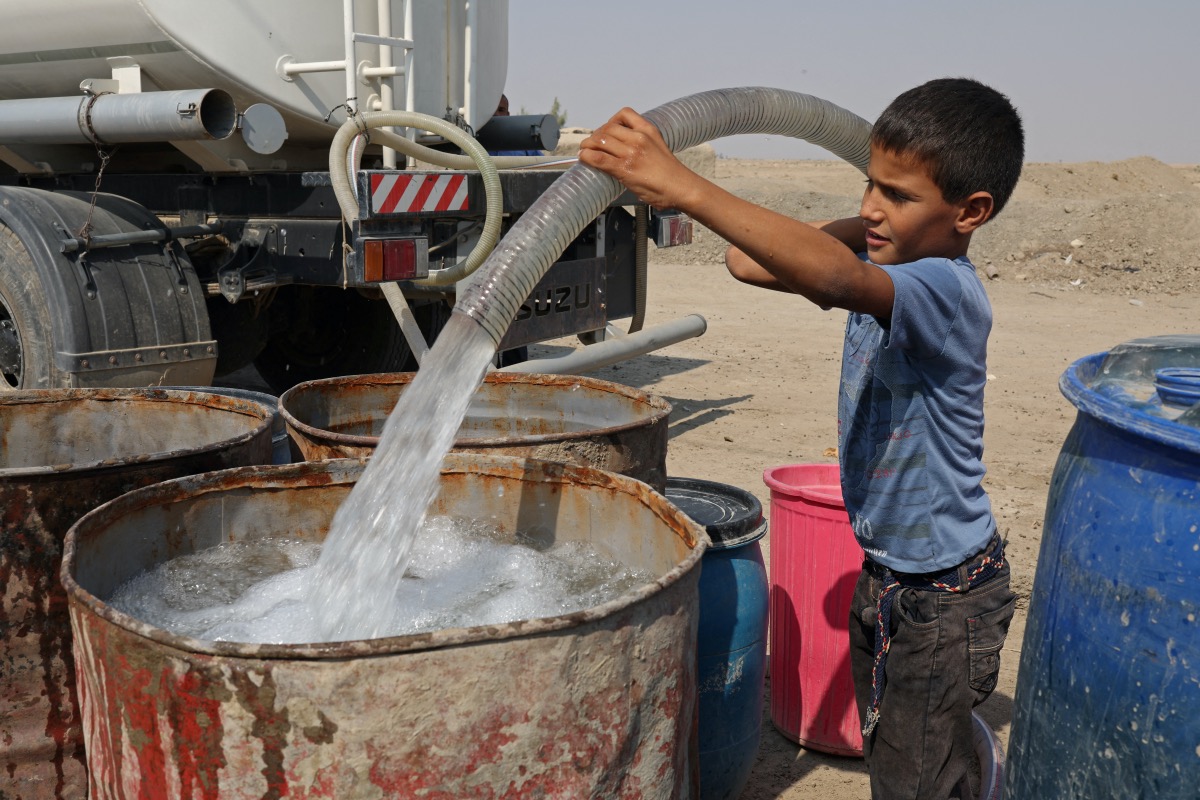
Haider Jalil, 10, fills a water tank from a truck outside his family home in the village of Al-Bouzayyat which sits on the bank of a former canal which has dried up, in Diwaniya, Iraq, on 20th October. PICTURE: Reuters/Alaa Al-Marjani
Independent consultant Istepanian said water consumption in Iraq should be close to 70 billion cubic metres a year but now had nearly halved to about 40 billion.
“This is going to be the fourth consecutive dry year, the weather forecasts don’t look optimistic, and reservoirs are completely out of service,” said Ahmed Al-Khazali, an official in the operational authority of the Ministry of Water Resources.
While southern Iraq has suffered some of the most severe shortages, few regions are immune. In northern Iraq and Syria the same mix of lower rainfall and rivers has combined with conflict and neglect to devastate rural communities.
We rely on our readers to fund Sight's work - become a financial supporter today!
For more information, head to our Subscriber's page.
In Kurdish-controlled northern Iraq, wheat production fell 70 per cent this year to 300,000 tonnes, said Karwan Sabah Hama Salih, director general of water resources at the region’s Agriculture Ministry, forcing many people to dig wells.
“Digging wells is not a strategic solution, but we don’t have a quick alternative,” he said.
Across the border in Syria, levels at dams on the Euphrates have fallen by up to five metres, shrinking reservoirs and leaving farmers struggling to access the remaining water reserves.
Officials accuse Turkey of cutting the river’s flow over the last two years to half the level it committed to in a 1987 accord, a charge Ankara denies.
“I stopped farming because it was impossible to irrigate the agricultural land,” said Ahmed Hammoud, standing next to newly dried-up banks of the Euphrates in northern Syria.
Syria’s long-running civil war grew out of anti-government protests in 2011 following a long drought that hit crop yields and livestock and drove people into cities.
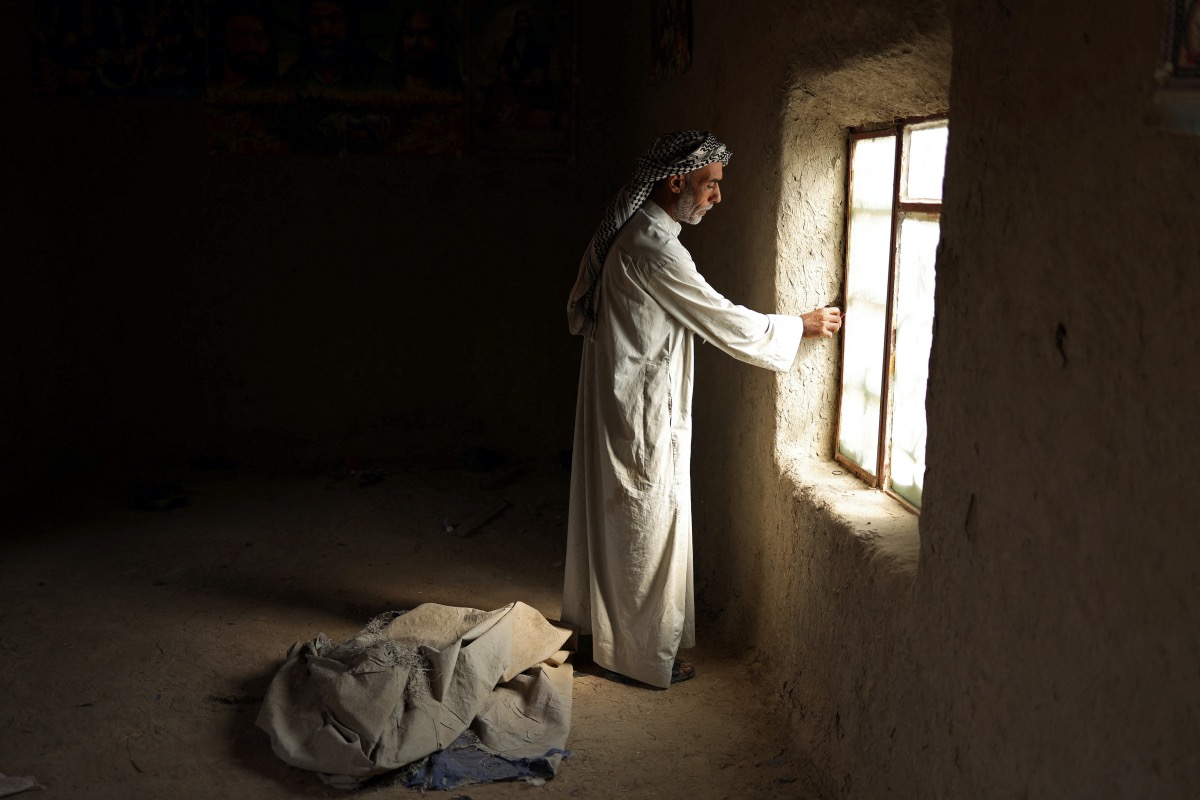
Taha Yassin, 46, stands inside the deserted home of his neighbour, Hedyya Ouda who’s family have left the village of Al-Bouzayyat, in Diwaniya, Iraq, on 8th November. “The village is empty,” said Hedyya Ouda, one of the few remaining residents when Reuters visited her in October. Hedyya and her husband stopped growing wheat and barley three years ago because of water shortages, sold their livestock and were forced to travel about 60 kilometres twice a month to buy drinking water. When Reuters returned to their village in November, both had left for the city. PICTURE: Reuters/Alaa Al-Marjani
The UN climate science panel said in April that the population upheaval was directly linked to the drought, although it judged the uprising would likely have erupted anyway.
In southern Iraq, competition for water is now fuelling disputes and conflict between farming communities, according to seven tribal leaders and Iraqi officials.
Mustafa Qazmouz, a 23-year-old farmer in Diwaniya, was killed three years ago during a dispute after his neighbour expanded a pipeline from a canal to divert a bigger share of water, Qazmouz’s brother Haider said.
“If there was water, these problems wouldn’t have started,” he said.
In October, a video on social media showed security forces scuffling with farmers at a canal in Al-Muthana. Thirty people were injured and 11 arrested, said Abdel Wahab Al-Yasary, Deputy Governor for agriculture and water in the southern province.
He said the fight broke out when water ministry employees started replacing a distribution pipe in the canal because the water level had dropped below it. Residents downstream feared the move was designed to divert more water away from them.
Standing by an almost-dry offshoot of the canal, tribal leader Maksad Rahim said he remembered when it was full of clear water and the landscape green with trees.
“Now there are so many sandstorms because there are no plants and trees to protect us,” he said.
– Additional reporting by EMAD AL-KHUZAIE and ALAA AL-MARJANI in Diwaniya and ORHAN QEREMAN in northern Syria
If you are in the US and are experiencing mental health-related distress or are worried about a loved one who may need crisis support, contact the 988 Suicide and Crisis Lifeline by calling or texting 988. In Australia, people looking for help or information can call Lifeline on 13 11 14 or the Suicide Call Back Service on 1300 659 467.






